You think your boss stinks now? Just wait.
By Mark Stewart

Photo Credit: iStockphoto/Thinkstock
One in 75 home businesses will generate $1 million or more in 2013. The likelihood of a home business showing a profit over a 3-to-5 year period is double that of a traditional brick- and-mortar business. A recent poll of working-age Americans showed that roughly 7 in 10 would prefer to be self-employed. It seems like a no-brainer, right? Well, all I can say is be careful what you wish for.
As someone who has worked primarily out of a home office full-time for two decades, I have come to a couple of important conclusions. First, I am forever doomed to be one of the 74 people who isn’t bringing in a million a year. Second, I do know what I’m doing. I am successful in my field (publishing), my mortgage gets paid on time, the cupboards are full and I can’t recall the last time I had “nothing to do.” When my spouse or children invite guests over, they do not try to hide me, even unshaven, on my worst hair day. I guess the fact that I still have a wife and kids should count for something, too. I almost never get sick because my human contact is limited. And I don’t have a huge number of friends, probably for the same reason.

Photo Credit: iStockphoto/Thinkstock
It’s a life I thoroughly enjoy…however, not one I recommend to just anyone.
Invariably and somewhat regularly, I am asked by friends, acquaintances, business contacts and just random people for advice on starting or managing a home-based business. I may not be the brightest business person (my accountant is constantly reminding me of this) but as far as these folks are concerned, I have acquired enough experience to be of some use to them. Consequently, I feel comfortable answering questions, sharing anecdotes and insights, and encouraging them to be honest and introspective about whether they truly are cut out to work from home.
Over the years, I have developed a very personal and totally unscientific list of Do’s and Don’t’s for people considering a home-based business. Some are common sense, while others are the result of trial, error, experience, and additional error. So without further adieu, I present the full-time home-based business Gospel According to Me:
HABIT FORMING
• Wake up each day with a battle plan. No, make that Wake up each day prepared to go to war. This is the single greatest piece of advice I can offer, so why save it until last? The world owes you nothing; your home business is not guaranteed to survive. To succeed, you need to look back at the end of each day and be able to say, “I did everything I possibly could today to move my business forward.” It starts with an attitude, and includes intense focus, self-examination and discipline. It means making lists and crossing things off. It means using your time intelligently. It means not getting careless and shooting yourself in the foot. Like a soldier, you wake up every day prepared to go over the top and enter enemy territory. And like a soldier, when the sun goes down, you’re happy if you’ve gained a little ground and have lived to fight another day.
• If you wake up, get up. When you run a home-based-business, there is no official start to the workday. If you are able to sleep to 9:30, kudos to you. But if your eyes are wide open at 6:30 and you’re already thinking of new ideas, get out of bed and ease into the day.
• Dress before 10:00 a.m. It’s fine to start the day in your underwear, but at some point you will pass in front of a mirror and realize you look like a hobo. Getting dressed is a way of telling yourself it’s time to get serious.
• Make lists. Make a new list each morning, prioritize the items that absolutely must be accomplished that day, and cross them off as quickly as you can. The feeling of accomplishment comes when you start crossing off things below the must-do’s. As you think of new items, add them. If new tasks or opportunities arise during the day, add them, too. Even if you don’t get to them, they will be there in writing for you when you make your new list tomorrow.
• Shower or bathe at the end of each working day. Your significant other, offspring and pets will love you for it. More important, it helps wash away the working part of your day. It can happen at 4:30 or 7:00 or midnight—just don’t be tempted back to work after you’ve toweled off.
• Learn how to power down. This is the second-most important piece of advice I can offer. A high percentage of the people I know who failed to make a go of a home business (this includes a lot of freelance writers and editors) tell me that the thing they simply could not do was shut their brain off at night. When you work in a traditional place of business, you leave it physically and return home. Yes, some people take their jobs home with them, but there is a physical separation that gives them an opportunity to recharge and be mentally ready for the coming day. When your business is in your home, it’s harder to empty your head before it hits the pillow. If you toss and turn worrying about a client who owes you money, or whether an important phone call went well, or how you can tweak your social media presence, then you will crash into a wall the next day, accomplish less than you want, and toss and turn even more the next night. And there is only so much Ambien you can take.

Photo Credit: iStockphoto/Thinkstock
THE WORKSPACE
• Set up a clearly defined work area. It doesn’t have to be sealed off from the rest of the house, and it doesn’t have to be immaculate. But it must be a legitimate workspace. It tells you and everyone else that you are serious about getting things done when you are sitting or standing there.
• Set up a clearly defined storage area. You need a place to put things that are important to your business, but which you don’t need to access every day. Invest the time required to organize, label, alphabetize—whatever it takes so you don’t waste time retrieving these items.
• Establish boundaries. As the operator of a home-based business, accept the fact that you will never achieve church-and-state balance between home and business. There will always be spillover, especial if another family member is involved in your company. Nevertheless, explain openly and clearly to those who share your domicile that your home sometimes must adhere to basic rules of business, and that no one should take it personally if they feel ignored or underappreciated in some way. Also, your business workspace must be respected; it is not for them to use or disturb.
• Clear your line of sight. When you chose a primary workspace—the place where your attention cannot wander—remove family photos and other items that will tempt you to daydream or lose focus. You should never have a window directly in front of you, even if there is a computer screen between you and the window. It’s okay to keep these things near to you, just not right in front of you. By the way, having a clutter • Sound off. You do not need a soundtrack for your life. Eliminate any noise that distracts you, breaks your concentration, or diminishes your ability to be productive. Recognize that your iPod, stereo, radio and television could be your worst enemies. Silence is literally golden. If you are working hard, you won’t notice the lack of music or news chatter. I feel the same should be true of the noises that alert you to new emails, texts, tweets or Facebook entries. They create too many temptations. Keep your phone ringer on, that’s it.
• Choose a comfortable chair. A desk chair is like a pair of shoes. It’s worth spending a little time and money to find the right fit. Many a carpal tunnel case began with the wrong desk chair. The puffy leather reclining model at Staples may look good and feel great, but that doesn’t mean it’s the one you want. Start out with something that’s already around the house until you develop a sense of which features might enhance the way you interact with your workspace. In my case, I sit in a wooden armchair. Wheels and padding didn’t work for me. To each his own.
• Backup everything. Invest $100 in a computer backup device and learn how to use it properly. If a database is compromised or you lose a month’s worth of emails, the impact could cripple your business. I speak from experience.
• Get your phone situation straightened out. Designate at least one line and one physical phone to your business. If that phone rings, it’s business. If another phone rings, it’s not. You cannot imagine how this will reduce the anxiety and stress level in your home. If you have landlines, this is especially important. But even if you are an all-cell household, it enables you to “close your business” and devote yourself to family and personal matters when you need to.
• Don’t use the phone for business when the little ones are around. A business professional does noted workspace is no crime. Some people simply function better that way.
interact with others while toddlers are screaming in the background. The same goes for babies, teenagers, significant others, dogs and birds. Plan your phone time for when you have quiet time.

Photo Credit: iStockphoto/Thinkstock
BODY & SOUL
• Obtain insurance. Boring but important. If you do not have insurance coverage through another job or through a spouse, make this a priority. The peace of mind alone is worth it. Sadly, the cost of a half-decent health insurance plan in New Jersey for a small, independent home business is absolutely vulgar—$300 to $500 a week for a family of four. I am not a religious person, but in my 20 years of paying usurious, ever-escalating premiums, I have developed a belief system based on the idea that everyone in the health insurance industry will find themselves at the bottom of a fiery hole after they die. If I find out otherwise, I will be really disappointed. Did I mention that I’m not fond of health insurance companies?
• Watch what you eat. And how you eat. I have gone 10 hours without eating or drinking anything because I was so absorbed in my work. Other times I have consumed five full meals in a day out of sheer boredom. It’s a good idea to have a general plan when it comes to breakfast, lunch and dinner. That has helped me stay within 10 pounds or so—up or down—of the same weight for the past 20 years. If you tend toward unconscious or binge eating, recognize that your new workplace is attached to a kitchen, and that no one is there to watch in horror as you down a tub of ice cream at 11 in the morning. Self-control, please!
• Get regular exercise. This has always been a challenge for me. I don’t swim unless I’m drowning and I don’t run unless an animal is chasing me. I don’t like sports without a score and I have purchased at least three gym memberships in my life without ever actually having set foot in a gym. My solution was to set up an office in the attic of our house, and to take any opportunity I could think of to go to the basement or first floor, and then back up again. On an average day I’ll bet I go up and down 300 steps. My legs are like hardened steel (my belly is more molten). I have never had to blow $1,000 on a stairclimber. I am in pretty decent shape. That being said, I know someone who was so consciencious about regular exercise that she could not begin her day until she had completed the ritual of hitting the gym, showering, and eating a low-calorie breakfast. This was an admirable routine, except for one thing: These were her most alert and productive hours of the day. At 3:30 she was out of gas and worthless for anything other than menial tasks. Use your best judgment here.
• Don’t drink. There are many ways to reward yourself, and many ways to decompress. None of these ways should involve alcohol. At least one person I know has lost a business (and more) because he started drinking alone when he should have been working. I strongly suspect a couple of others I know stumbled down the same path. Once you are done for the day, cheers, go for it. It’s your life and it’s a free country. Yes, we all know Hemingway did his best work with a bottle next to the typewriter, but his own story didn’t end very well, did it?
TIME MANAGEMENT
• Stay off the Internet. It’s a tool. Use it intelligently. If you are not pursuing a goal relevant to your home business, leave the Overstock.com browsing, eBay bidding, eNews-reading, Facebooking and other stuff we won’t mention until you have officially called it quits for the day.
• Identify your most productive hours. On a good day, the human brain probably can muster about six hours of optimum performance. And like any other business, a home-based business can really wear you out. So do yourself a huge favor and recognize the times of day when you are “locked-in” and then plan your schedule accordingly. My mental engine starts firing on all cylinders around 10:30 in the morning and keeps going until 3:30 or so. Then sometime after 6:00 or 7:00 I get a second wind and can work right into the night. The key for me is to assign myself the most important tasks at those optimum hours, and to have dumb-dumb work to do before and in between. What’s dumb-dumb work? Putting things back where they belong. Doing basic research on the Internet. Compiling information on the marketplace or checking out the competition. Going to the post office or the bank.
• Make personal business into breaks. Everyone needs to take short breaks during the day. Avoid falling into the trap of turning on the TV or surfing the web aimlessly. You will lose too much valuable time. Instead, devote 10 or 15 minutes to taking care of personal business—throw a load in the wash, tighten the hinge on that cabinet, take out the garbage, floss.
• Use downtime to plan ahead. When you’re not busy, or you’re tired, or you just need to switch gears, use these moments to broaden the foundation of your home-based business. If you have made a business plan, it should include where you’d like to be in 6 months or a year or 18 months—along with the steps needed to get you there. Downtime is the right time to chip away at the tasks required to move you closer to your goals. This has been incredibly important to my business. There’s nothing worse than finishing one job and going, “Um, what do I do next?” I know what I’ll be doing two years from now—which is rare in my business. Trust me, it didn’t happen overnight!

Photo Credit: iStockphoto/Thinkstock
Home Business by the Numbers
There are more than 15 million home-based businesses in the U.S., and more than 10 percent of American homes are used in some way as a place of business. Women appear to make up a majority of the home-business “workforce.” Start-up costs for most home-based businesses are under $10,000. Many begin with less than $1,000. Some start with the shirt on their backs. Although much of the income generated by home businesses goes unreported, estimates of the amount of money made by people working from home are typically upwards of $400 billion a year. Fewer than 5% of successful home businesses leave the home and move into office or retail space.
Home Office Feng Shui
The Feng Shui of a home office is practical and should mimic that of most business offices. The office should set the scene for your transformation from relaxed resident to reliable and focused professional. When you walk in, you should feel as though you are entering a different world, so that your mind shifts from home-related matters to help you concentrate on work. Here are some Feng Shui do’s and don’t’s to create a positive work environment in your home office:
Do…
create a “professional” décor. Hang positive business mementoes on walls, in full view, to reinforce your identity as a successful and skilled worker.
Don’t…
have the room double as a multiuse venue, or it will be difficult to seriously concentrate on your work.
Do…
set up your desk so that all intruders—big or small, human or animal—can be seen, and thus you won’t be startled and distracted from your tasks. Similarly, the computer should sit so the user can easily see the door or room divider.
Don’t….
underestimate the value of bright lighting.

Photo Credit: iStockphoto/Thinkstock
Do…
hang a mirror so that you can see the view from your home-office window.
Don’t…
go overboard on organization. Yes, feng shui tenets stress the wisdom of a clean, efficient office, but this writer ascribes to the sage words: “Out of chaos, comes creativity.”
—Sarah Rossbach, author of Feng Shui: The Chinese Art of Placement and Interior Design with Feng Shui.
Editor’s Note: Mark Stewart has managed the EDGE editorial team since 2009. He also writes books for the school and library market, and runs a successful sports web site. He wrote this article in his wooden desk chair, at a computer set up against a wall with a blue abstract painting, surrounded by clutter, with no music playing.





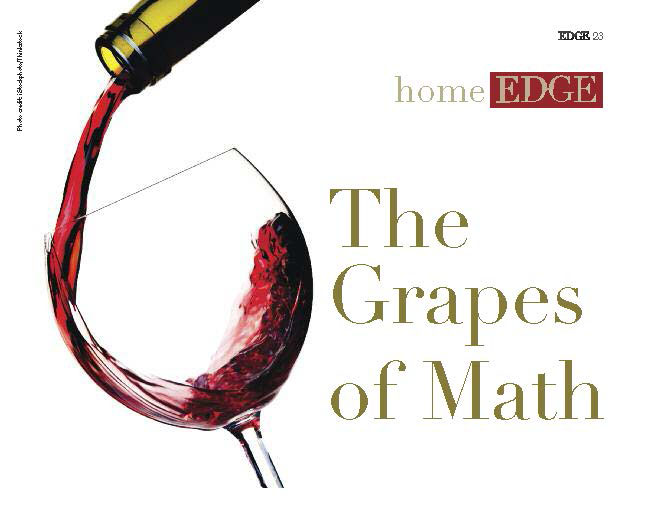












 Bariatric Surgery: A “Miracle Moment”
Bariatric Surgery: A “Miracle Moment” Heads Up On Facial Fractures
Heads Up On Facial Fractures Crazy Time for Cannabis
Crazy Time for Cannabis Link Between Sleep Disorders and Cancer Deaths
Link Between Sleep Disorders and Cancer Deaths Environmental Factors Trigger Allergies in Newborns
Environmental Factors Trigger Allergies in Newborns Holiday Baking: Shoulda Woulda Coulda
Holiday Baking: Shoulda Woulda Coulda New Findings on Gluten-Free Foods
New Findings on Gluten-Free Foods Raisin D’Etre
Raisin D’Etre





 THIN IS IN
THIN IS IN PENNY WISE
PENNY WISE BEACH BRAG
BEACH BRAG WRAP PARTY
WRAP PARTY









 Cervantes is located in a modest brick structure astride the train station in Cranford. (Come after 6 p.m., we were advised, and parking is free in the train station lot.) It’s part bar/lounge, where there’s often a lively happy hour, and part dining room. When the weather’s amenable, there’s a patio for outdoor dining. Imagine sipping cava, Spain’s sparkling wine, on that patio this summer as a prelude to a round of tapas.
Cervantes is located in a modest brick structure astride the train station in Cranford. (Come after 6 p.m., we were advised, and parking is free in the train station lot.) It’s part bar/lounge, where there’s often a lively happy hour, and part dining room. When the weather’s amenable, there’s a patio for outdoor dining. Imagine sipping cava, Spain’s sparkling wine, on that patio this summer as a prelude to a round of tapas.
 Good News for Popeye
Good News for Popeye
 I Can’t Believe It’s Not Healthy
I Can’t Believe It’s Not Healthy
 Nickel for Your Thoughts
Nickel for Your Thoughts Mouth to Mouth
Mouth to Mouth
 Now You See Me
Now You See Me Weighty Issues
Weighty Issues
 Red Hot News on Chili Peppers
Red Hot News on Chili Peppers Movers & (Salt) Shakers
Movers & (Salt) Shakers
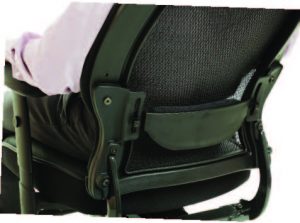 Bum Deal for New Yorkers
Bum Deal for New Yorkers
 $150 Up in Smoke
$150 Up in Smoke Nothing Rotten in the State of Denmark
Nothing Rotten in the State of Denmark
 Link Between Heartburn & Heart Attacks
Link Between Heartburn & Heart Attacks CBT Helping Insomniacs Hit the Snooze Button
CBT Helping Insomniacs Hit the Snooze Button

 CARE-FULLY READY
CARE-FULLY READY VISIONARY HOSPITAL ADMINISTRATOR LEAVES IMPRESSIVE LEGACY
VISIONARY HOSPITAL ADMINISTRATOR LEAVES IMPRESSIVE LEGACY PAGE TURNERS
PAGE TURNERS SHARED VISION
SHARED VISION HITTING THE PAVEMENT
HITTING THE PAVEMENT LIFE SAVING MESSAGE
LIFE SAVING MESSAGE HEAD OF THE CLASS
HEAD OF THE CLASS PAYING IT FORWARD
PAYING IT FORWARD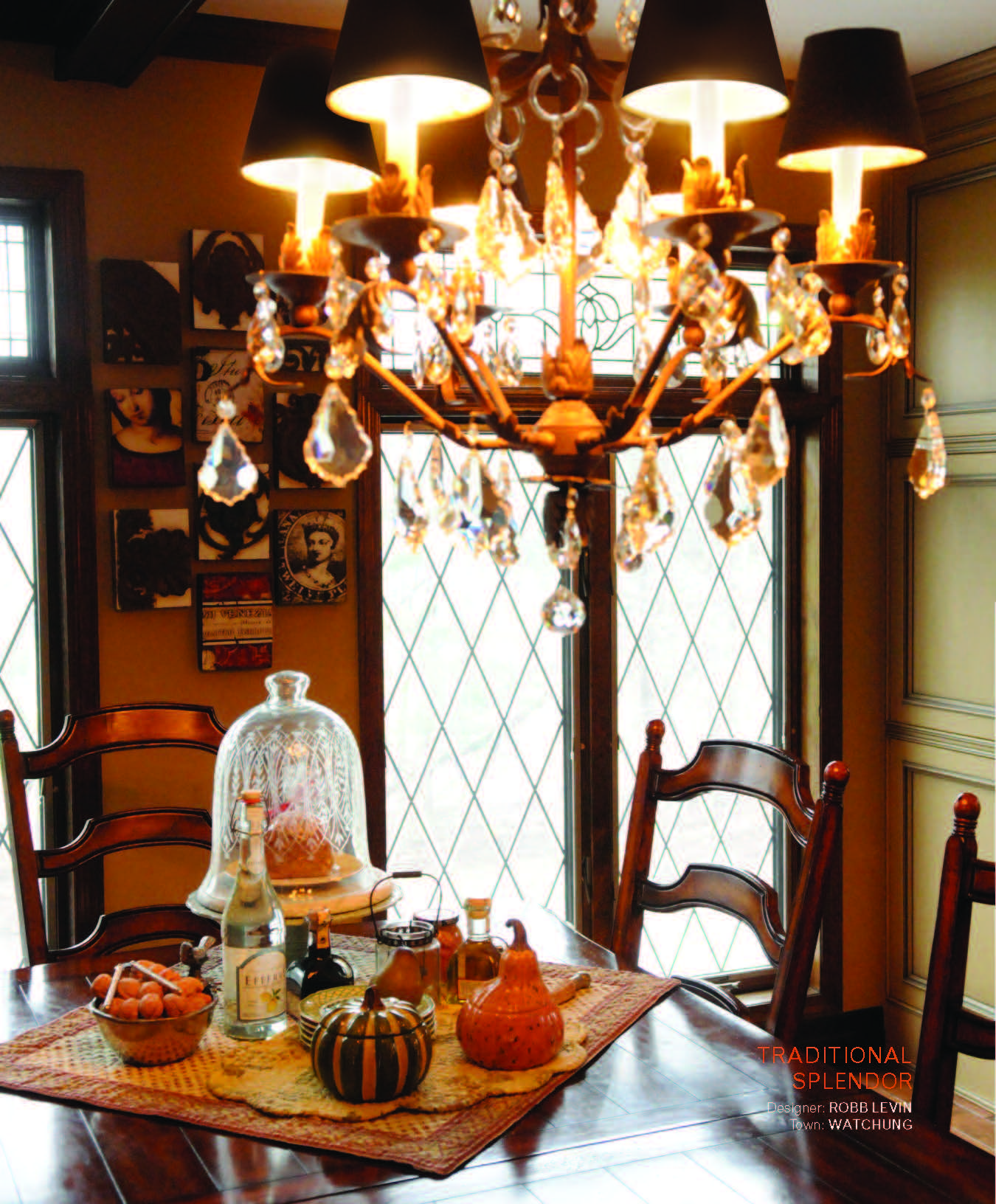

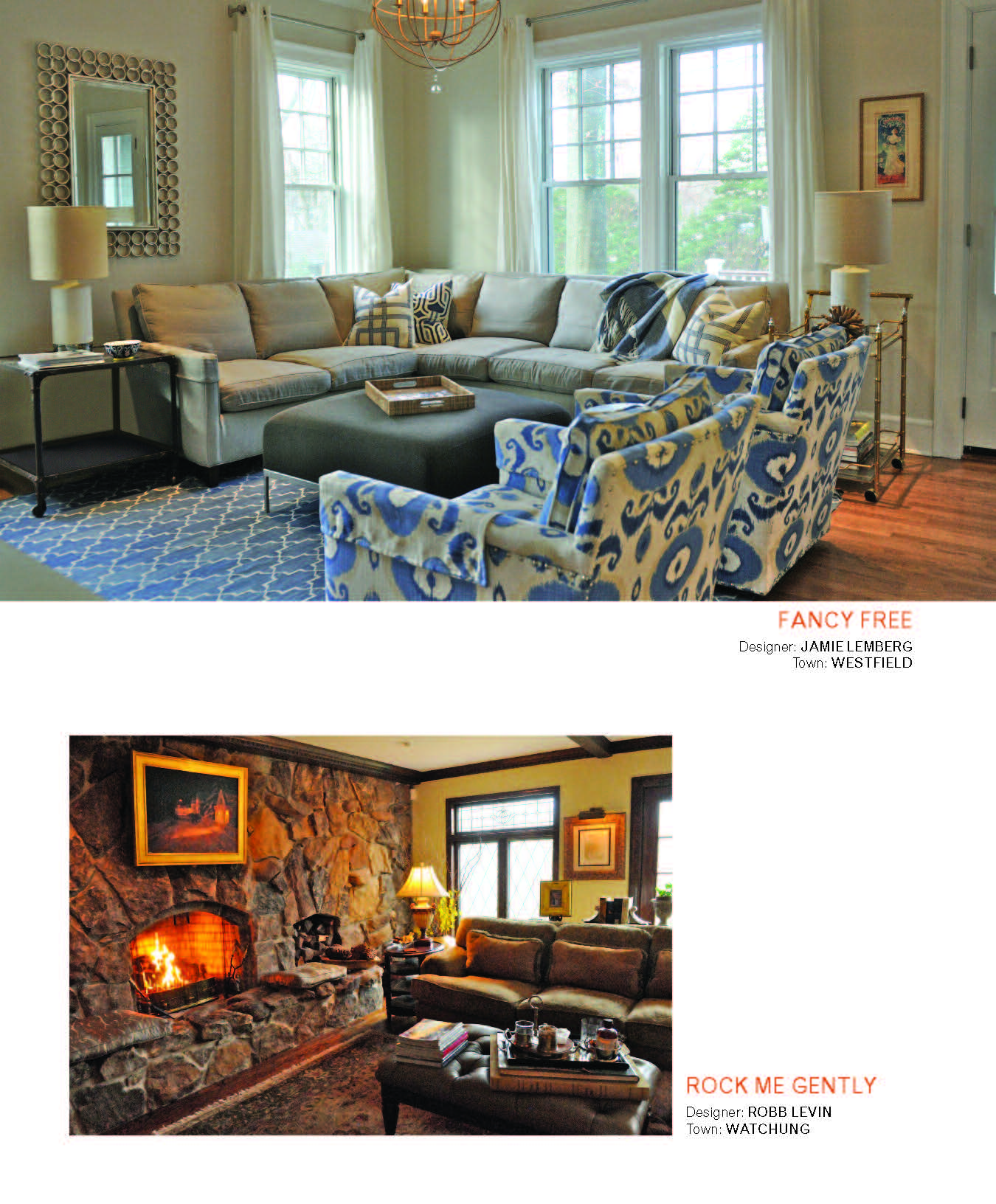




 The Office Beer Bar & Grill • Truffled Tots
The Office Beer Bar & Grill • Truffled Tots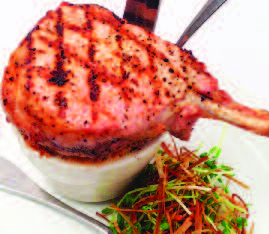 Paragon Tap & Table • Beer Brined Pork Chop
Paragon Tap & Table • Beer Brined Pork Chop The Black Horse Tavern & Pub • Goffles Farm Chicken Breast
The Black Horse Tavern & Pub • Goffles Farm Chicken Breast Piattino Neighborhood Bistro • Pan Seared Atlantic Salmon
Piattino Neighborhood Bistro • Pan Seared Atlantic Salmon George and Martha’s American Grille • Crispy Jumbo Lump Crab Croquettes
George and Martha’s American Grille • Crispy Jumbo Lump Crab Croquettes The Office Tavern Grill • Maryland Blue Crab Dip
The Office Tavern Grill • Maryland Blue Crab Dip Daimatsu • Sushi Pizza
Daimatsu • Sushi Pizza Publick House • Roasted Long Island Duck Breast
Publick House • Roasted Long Island Duck Breast
 Café Z • Hot “Z” Shrimp
Café Z • Hot “Z” Shrimp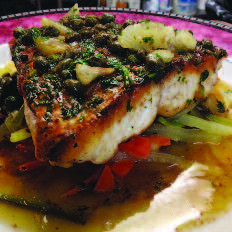 Chestnut Chateau • Black Seabass
Chestnut Chateau • Black Seabass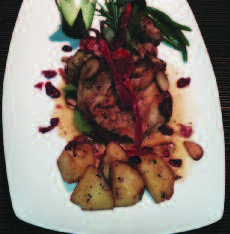 Mario’s Tutto Bene • Vinegar Pork Chops
Mario’s Tutto Bene • Vinegar Pork Chops The Manor • Surf and Turf
The Manor • Surf and Turf
 BANKING ON THE VALUE OF PARTNERSHIPS
BANKING ON THE VALUE OF PARTNERSHIPS BIG BOYS DON’T CRY
BIG BOYS DON’T CRY
 Often, literally. There are LPs galore as decor and a deejay at a computer taking requests. I somewhat hesitantly ask for John Coltrane and, within a minute, get a couple tracks of Coltrane. We take menus from a tuned-in server and receive a concise, but not condescending primer on how to navigate a rather novel bill of fare. We dig into a series of dishes that connect the accessible to the adventurous and fall in love with Roosterspin’s cuisine—and concept.
Often, literally. There are LPs galore as decor and a deejay at a computer taking requests. I somewhat hesitantly ask for John Coltrane and, within a minute, get a couple tracks of Coltrane. We take menus from a tuned-in server and receive a concise, but not condescending primer on how to navigate a rather novel bill of fare. We dig into a series of dishes that connect the accessible to the adventurous and fall in love with Roosterspin’s cuisine—and concept. It is time for another small plate, which is how you can start here or dine straight through. Slurp map chae, sizzling skinny sweet potato noodles spliced with beef, wild mushrooms and shards of Asian vegetables. Bright and unexpectedly light are the seafood patties known as seafood jeon, packed with calamari, shrimp and vegetables and bound by egg. If you are looking for something hearty, snag galbi LA cut, a signature dish here, is a perfect partnership of silky short ribs with rice cakes and vegetables served with a nod to beloved Korean barbecue. Looking for light? The mango salad, flush with pretty beets and sweet potatoes and dressed with sesame, is a dandy mix of flavors that you will have a hard time separating ever again.
It is time for another small plate, which is how you can start here or dine straight through. Slurp map chae, sizzling skinny sweet potato noodles spliced with beef, wild mushrooms and shards of Asian vegetables. Bright and unexpectedly light are the seafood patties known as seafood jeon, packed with calamari, shrimp and vegetables and bound by egg. If you are looking for something hearty, snag galbi LA cut, a signature dish here, is a perfect partnership of silky short ribs with rice cakes and vegetables served with a nod to beloved Korean barbecue. Looking for light? The mango salad, flush with pretty beets and sweet potatoes and dressed with sesame, is a dandy mix of flavors that you will have a hard time separating ever again. Palisades Park’s next-door neighbor, Fort Lee, also boasts a large Korean population, as well as a robust commercial section featuring Korean shops and restaurants, which stretches from just south of the George Washington Bridge north to Englewood Cliffs. Two of the best are Gammeeok on Main Street and Dong Bang Grill on Palisade Avenue. Besides traditional Korean fare, Dong Bang Grill also does a brisk business at the sushi bar—which is saying something, considering the number of excellent Japanese restaurants in Fort Lee.
Palisades Park’s next-door neighbor, Fort Lee, also boasts a large Korean population, as well as a robust commercial section featuring Korean shops and restaurants, which stretches from just south of the George Washington Bridge north to Englewood Cliffs. Two of the best are Gammeeok on Main Street and Dong Bang Grill on Palisade Avenue. Besides traditional Korean fare, Dong Bang Grill also does a brisk business at the sushi bar—which is saying something, considering the number of excellent Japanese restaurants in Fort Lee.
 The biggest benefit of a well-cation is the jump-start it offers toward reaching your wellness goal. Staying on-program is much easier when the stresses of everyday life are removed and only healthy activities and meals are offered. And since guests share the same outlook, they support one another to stay committed toward reaching their wellness goals. The investment in a wellness vacation continues to pay off when new habits take hold after the vacation has ended. This may explain why the number of people who are investing their time and money in wellness-related travel has been on the rise. The worldwide wellness tourism market—estimated by some at over $400 billion—has been growing steadily since 2007, increasing nearly 13 percent last year.
The biggest benefit of a well-cation is the jump-start it offers toward reaching your wellness goal. Staying on-program is much easier when the stresses of everyday life are removed and only healthy activities and meals are offered. And since guests share the same outlook, they support one another to stay committed toward reaching their wellness goals. The investment in a wellness vacation continues to pay off when new habits take hold after the vacation has ended. This may explain why the number of people who are investing their time and money in wellness-related travel has been on the rise. The worldwide wellness tourism market—estimated by some at over $400 billion—has been growing steadily since 2007, increasing nearly 13 percent last year. There are a number of weight loss retreats in the region, including the Copperhood Retreat & Spa in the Catskills. It has been touted as one of the best in the world. The three-night detox plan costs about $1,500, while the 21-day “Break Your Bad Habits” plan rate is about $8,000, depending on what level of accommodations is chosen.
There are a number of weight loss retreats in the region, including the Copperhood Retreat & Spa in the Catskills. It has been touted as one of the best in the world. The three-night detox plan costs about $1,500, while the 21-day “Break Your Bad Habits” plan rate is about $8,000, depending on what level of accommodations is chosen. Detoxification
Detoxification Fitness
Fitness

 The six ways to assess a problem are by looking at the areas of Thought, Emotion, Action, Frequency, Duration and Intensity. Thought refers to how we think about and view our problem. Are our thoughts, for example, helping to solve our problem? Or are they self-critical, condemning or working against us and therefore exaggerating or making our problem worse? Emotion refers to the feelings that a problem brings up in us, and how we handle those feelings. Can we name what we are feeling (e.g. sad, anxious, guilty, angry, insecure, shame or rage)? Are we able to make friends with our feelings and get information from them about what we want and need? Or do we let our emotions overwhelm and injure our health? Action refers to the positive or negative behaviors that we do in response to our problem. Does our problem lead us to say bad things to people—or try to shop, drink, smoke, drug or eat our problem away? Frequency refers to how often a problem or difficulty occurs. Does it trouble us once a month, week, day, hour or minute? Duration refers to how long our problem lasts when it comes. Does it cause us to feel bad for a couple of minutes and then go away, or do we feel terrible for hours, days, weeks, months or years? Finally, Intensity refers to the degree of distress the problem causes. Does it lead us to be mildly uncomfortable and irritable, or so intensely upset that we are ready to explode?
The six ways to assess a problem are by looking at the areas of Thought, Emotion, Action, Frequency, Duration and Intensity. Thought refers to how we think about and view our problem. Are our thoughts, for example, helping to solve our problem? Or are they self-critical, condemning or working against us and therefore exaggerating or making our problem worse? Emotion refers to the feelings that a problem brings up in us, and how we handle those feelings. Can we name what we are feeling (e.g. sad, anxious, guilty, angry, insecure, shame or rage)? Are we able to make friends with our feelings and get information from them about what we want and need? Or do we let our emotions overwhelm and injure our health? Action refers to the positive or negative behaviors that we do in response to our problem. Does our problem lead us to say bad things to people—or try to shop, drink, smoke, drug or eat our problem away? Frequency refers to how often a problem or difficulty occurs. Does it trouble us once a month, week, day, hour or minute? Duration refers to how long our problem lasts when it comes. Does it cause us to feel bad for a couple of minutes and then go away, or do we feel terrible for hours, days, weeks, months or years? Finally, Intensity refers to the degree of distress the problem causes. Does it lead us to be mildly uncomfortable and irritable, or so intensely upset that we are ready to explode? Saturn is the God of time. People who use a Saturn strategy—Strategy #6—take time to digest and respond to their problems. This involves patience, long-term planning and Steady, Patient Work over a long period of time. They know that continual small actions enable them to change a situation, whether it’s something about themselves, another person or a relationship.
Saturn is the God of time. People who use a Saturn strategy—Strategy #6—take time to digest and respond to their problems. This involves patience, long-term planning and Steady, Patient Work over a long period of time. They know that continual small actions enable them to change a situation, whether it’s something about themselves, another person or a relationship. Editor’s Note: Dr. Rodger Goddard has served as the Chief Psychologist at Trinitas Regional Medical Center for over 25 years. He is the director of Wellness Management Services, which provides workshops, presentations and programs to companies and schools to improve individual and organizational success. He is also the director of the hospital’s APA-accredited psychology internship program. He can be reached at rgoddard@trinitas.org or (908) 994-7334.
Editor’s Note: Dr. Rodger Goddard has served as the Chief Psychologist at Trinitas Regional Medical Center for over 25 years. He is the director of Wellness Management Services, which provides workshops, presentations and programs to companies and schools to improve individual and organizational success. He is also the director of the hospital’s APA-accredited psychology internship program. He can be reached at rgoddard@trinitas.org or (908) 994-7334.




 “A homeowner can create an effective mesh network with a couple of wifi-enabled thermostats and a handful of plug-in devices that control table lamps,” says Andre Conway, an industry consultant who works with commercial and residential security clients in New Jersey, Pennsylvania and New York. “The beauty of this technology is that the more devices you add, the better the mesh becomes and the smarter your home can be.”
“A homeowner can create an effective mesh network with a couple of wifi-enabled thermostats and a handful of plug-in devices that control table lamps,” says Andre Conway, an industry consultant who works with commercial and residential security clients in New Jersey, Pennsylvania and New York. “The beauty of this technology is that the more devices you add, the better the mesh becomes and the smarter your home can be.”



 My secret? For three decades, I—and now my family of four—have been enjoying a two-bedroom efficiency villa at the family-run Domaine de la Source, just 10 minutes north of the Menton beaches and a half-hour from Monaco for around $1,000 for a week in high season. Once an olive grove, Domaine de la Source offers twelve rental apartments and two pools. It’s hardly the region’s only bargain-priced accommodation, just the one we swear by. We make our own breakfast in the closet-sized but clean kitchen and venture out each day to explore this remarkable part of the Mediterranean coast.
My secret? For three decades, I—and now my family of four—have been enjoying a two-bedroom efficiency villa at the family-run Domaine de la Source, just 10 minutes north of the Menton beaches and a half-hour from Monaco for around $1,000 for a week in high season. Once an olive grove, Domaine de la Source offers twelve rental apartments and two pools. It’s hardly the region’s only bargain-priced accommodation, just the one we swear by. We make our own breakfast in the closet-sized but clean kitchen and venture out each day to explore this remarkable part of the Mediterranean coast. Just west of Monaco, the gardens and museum at Villa Ephrussi Rothschild in Cap Ferrat are like a journey back to the Belle Epoque era. The villa was built in 1905 by the eccentric Mme. Beatrice Ephrussi de Rothschild of the famed banking family, who divorced M. Ephrussi—scion of Russian wheat merchants of The Hare with the Amber Eyes—before his gambling debts and ill-advised speculations could ruin her. The villa showcases her eclectic tastes, ranging from Meissen china and Aubusson carpets to genre art of Boucher and Fragonard to a collection of embroidered silk shoes for Chinese bound feet. Though childless, she treated her dogs, monkeys and mongoose as family, once throwing a lavish mock wedding for Diane and Major, her two poodles. The event featured printed invitations and hundreds of human and canine guests (all in formal attire), including a bulldog sporting a top hat. During the ceremony, the “bride” had a gold ring set in diamonds slipped onto her paw. Mme. Ephrussi de Rothschild was just as passionate about gardening. The grounds offer nine different restored gardens that overlook the Mediterranean and choreographed fountain displays. An audio guide is well worth the $20 fee.
Just west of Monaco, the gardens and museum at Villa Ephrussi Rothschild in Cap Ferrat are like a journey back to the Belle Epoque era. The villa was built in 1905 by the eccentric Mme. Beatrice Ephrussi de Rothschild of the famed banking family, who divorced M. Ephrussi—scion of Russian wheat merchants of The Hare with the Amber Eyes—before his gambling debts and ill-advised speculations could ruin her. The villa showcases her eclectic tastes, ranging from Meissen china and Aubusson carpets to genre art of Boucher and Fragonard to a collection of embroidered silk shoes for Chinese bound feet. Though childless, she treated her dogs, monkeys and mongoose as family, once throwing a lavish mock wedding for Diane and Major, her two poodles. The event featured printed invitations and hundreds of human and canine guests (all in formal attire), including a bulldog sporting a top hat. During the ceremony, the “bride” had a gold ring set in diamonds slipped onto her paw. Mme. Ephrussi de Rothschild was just as passionate about gardening. The grounds offer nine different restored gardens that overlook the Mediterranean and choreographed fountain displays. An audio guide is well worth the $20 fee. We especially enjoy touring the medieval hill towns, sited centuries ago high above the sea to protect the populace from pillaging Saracens. Eze, built above Cap Ferrat, is the most heavily trafficked by tourists. Its narrow lanes, which lead to a chateau, evoke life in the Middle Ages and the town has a stunning panoramic view of the Cote d’Azur. There is a two-Michelin-starred restaurant, Le Chevre d’Or, which is well worth the splurge for a meal (or maybe just a kir royale) near the top of Eze. The less-touristy hill towns of Roquebrune and Gorbio require stellar driving skills and steel nerves to negotiate the narrow roads and hairpin turns. The charming hill towns of Italy, near the French frontier, are also lovely and relatively tourist-free.
We especially enjoy touring the medieval hill towns, sited centuries ago high above the sea to protect the populace from pillaging Saracens. Eze, built above Cap Ferrat, is the most heavily trafficked by tourists. Its narrow lanes, which lead to a chateau, evoke life in the Middle Ages and the town has a stunning panoramic view of the Cote d’Azur. There is a two-Michelin-starred restaurant, Le Chevre d’Or, which is well worth the splurge for a meal (or maybe just a kir royale) near the top of Eze. The less-touristy hill towns of Roquebrune and Gorbio require stellar driving skills and steel nerves to negotiate the narrow roads and hairpin turns. The charming hill towns of Italy, near the French frontier, are also lovely and relatively tourist-free. Across the border from Menton, in Italy, is Hanbury Gardens (left), near Ventimiglia. Built in the 19th century by Lord Hanbury, a British diplomat—who like many travelers of that age gathered exotic flora from far flung lands of the former British Empire—created a landscape with Moorish and Oriental follies. The garden is quite vertical and dramatic, stretching down to the Mediterranean.
Across the border from Menton, in Italy, is Hanbury Gardens (left), near Ventimiglia. Built in the 19th century by Lord Hanbury, a British diplomat—who like many travelers of that age gathered exotic flora from far flung lands of the former British Empire—created a landscape with Moorish and Oriental follies. The garden is quite vertical and dramatic, stretching down to the Mediterranean. The food in the port towns along the Cote d’Azur does not require a second mortgage. There are any number of small restaurants offering thin-crust pizza, fresh salads, mussels, and pain bagnat (a Niçoise version of a tuna sandwich) for a reasonable price. Menton (right) is a lovely old port town with affordable shops and pizzerias and a large Beaux Art farmers’ market selling artisanal baguettes, cured meats and cheeses that are perfect for a beach picnic.
The food in the port towns along the Cote d’Azur does not require a second mortgage. There are any number of small restaurants offering thin-crust pizza, fresh salads, mussels, and pain bagnat (a Niçoise version of a tuna sandwich) for a reasonable price. Menton (right) is a lovely old port town with affordable shops and pizzerias and a large Beaux Art farmers’ market selling artisanal baguettes, cured meats and cheeses that are perfect for a beach picnic. With the Euros we save on pauper-priced lodging, attractions and meals, we like to treat ourselves to at least one gourmet French meal fit for a prince or princess. There is a Michelin two-star restaurant right on the water and right on the Italy/France border called Mirazur. It’s worth every penny of the $100 per person (not including wine) price tag, and you will definitely need reservations. And of course, there are the grand hotel restaurants of Monaco—many on rooftops overlooking the water—which prepare true gastronomic adventures. They are delicious…mais tres cher!
With the Euros we save on pauper-priced lodging, attractions and meals, we like to treat ourselves to at least one gourmet French meal fit for a prince or princess. There is a Michelin two-star restaurant right on the water and right on the Italy/France border called Mirazur. It’s worth every penny of the $100 per person (not including wine) price tag, and you will definitely need reservations. And of course, there are the grand hotel restaurants of Monaco—many on rooftops overlooking the water—which prepare true gastronomic adventures. They are delicious…mais tres cher!